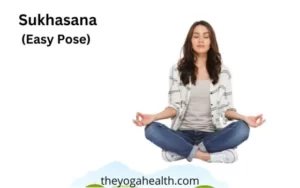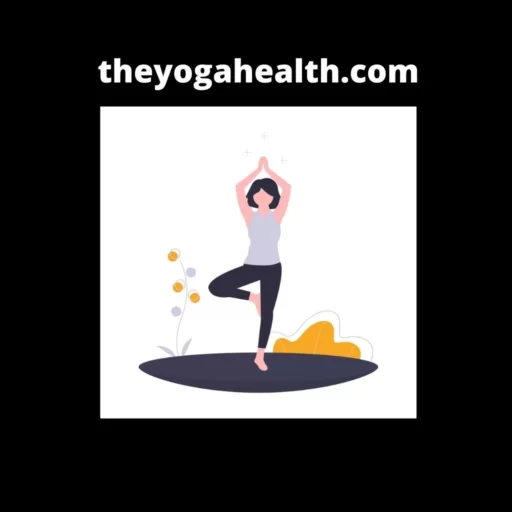Parivrtta Trikonasana or Revolved Triangle Pose is a standing side bend pose. It is a counterpose to Utthita Trikonasana. As maintaining balance in this pose is quite difficult, it helps to develop a sense of balance to perform all standing poses.
Table of Contents
What is Parivrtta Trikonasana
‘Parivrtta’ in the Sanskrit language means ‘revolved or ‘turned around and ‘Trikona’ is a triangle. This is also known as the ‘revolving triangle pose’ in the English language.
Basic details:
| Sanskrit Name | Parivrtta Trikonasana |
| English Name | Revolved Triangle Pose |
| Difficulty Level | Intermediate |
| Position | Standing |
Benefits to following muscle groups:
- Lower Back
- Middle Back
- Core (Abs)
- Arms
- Shoulders
- Hamstrings
- Hips
- Chest
- Neck
- Quadriceps
- Gluteus
How to do Parivrtta Trikonasana
1. Stand on your Yoga mat in ‘Tadasana’. Take a deep breath and with a jump spread apart your legs to your sides about three to three and a half feet. Now raise your arms to your sides, in line with your shoulders and your palms should face the floor.
2. Now turn your right foot 90 degrees to your right side and your left foot about 60 degrees to your right. Keep your left leg stretched and tightened at your knee.
3. Now breathe out, rotate your upper body towards your left leg in the opposite direction, so that your left palm is on the floor near the outer side of your right foot.
4. Stretch your right arm up, bringing it in line with your left arm, turn your head upwards and start gazing at your right thumb.
5. Keep your knees tight and don’t lift the toes of your right foot from the floor and also keep the outer side of your left foot properly on the floor.
6. Now stretch both your shoulders and shoulder blades.
7. You can hold this pose for about 30 seconds to a minute, with normal breathing.
8. Now breathe in and raise your left hand from the floor. Rotate your upper body back to its normal position and come back to starting position given in point 1.
9. Breath out, repeat the pose on your left side by turning your left foot 90 degrees to your left side and right foot 60 degrees to your left, and place your right palm on the floor near the outer side of your left foot.
10. Hold for the same time duration as earlier.
11. To come out of the pose, breathe in, raise your upper body back to its original position and bring the toes in the front and the arms by the side of your body.
12. Breath out and jump back to the Tadasana pose. This completes the Parivrtta Trikonasana Pose.

Parivrtta Trikonasana Benefits:
1. Leg muscles
This asana strengthens and tones various leg muscles like hamstrings, calf, and thigh muscles. In this pose, one hip is internally flexed and another hip is laterally expended.
2. Back and spine
Muscles of the back and spine are made to function properly because this pose increases the flow of the blood supply near the lower part of the spinal area. The blood circulation to the whole body increases with the chest opening.
3. Chest Expansion
This pose is very helpful in expanding the chest; the twisting of the upper body (torso) expands the chest fully with the engagement of shoulders, shoulder blades, arms, rib cage, and abdomen.
4. Hamstring muscles
It strengthens and tones hamstring muscles and with every twist, the various joints like hips, pelvis, shoulder, and knees are properly contracted and stretched. Strength in the core and leg muscles helps the practitioner to gain confidence to perform more challenging poses.
5. Back pain
This pose helps relieve back pain. In this pose, the back muscles like the lower back and middle back are properly twisted which gives strength and flexibility to them. With regular practice of this pose those suffering from back pain get good relief.
6. Abdominal organs
In this pose the abdominal twist massages the organs of the abdomen and stimulates them. The twist also stimulates the digestive fire (Jatharagni) in the body, so those suffering from constipation and lack of appetite benefit from the practice of this pose.
7. Hip muscles
In this pose, the hip muscles are toned and strengthened. The spinal twist during the pose flexes one hip in the internal rotation and the other hip in lateral extension. The regular practice of this pose makes hip muscles strong and flexible.
8. Athletes and runners
This asana is particularly suitable for athletes and runners as all leg muscles are stretched in this pose, which gives suppleness to run.
Tips for doing this pose:
Keep legs straight.
Whileperforming the posekeep your legs straight If you are not able to reach the floor while bending down, don’t bend your knees cause it will give less benefit out of the pose to the practitioner. So for maximum benefit keep your legs straight.
Don’t bend your back.
Parivrtta Trikonasana is a side bending pose and not a forward bending pose so don’t bend your back or round your spine while performing this asana.
Muscle engagement.
This pose requires the proper engagement of your core and thighs muscles to give proper effect to the practitioners. So for maximum benefit keep your muscles tightened while performing the pose.
Common mistakes:
1. Don’t lift your heel
In this pose, the practitioner mustn’t lift his heel from the ground and keep it properly grounded throughout the pose movement. The lifting of the heel from the ground can also result in imbalance, strain, and injury to you.
2. Breathing
Normal breathing during the pose is also very important which most beginners fail to do and they try to hold their breath. Always keep in mind the holding of the breath is not going to give many benefits to the practitioner, so always make sure to breathe normally during the pose for maximum benefits.
3. Head alignment
During the pose make sure that your head is not going out of alignment, if your head is coming out beyond your front leg, it can cause imbalance or back strain. So always keep your head in proper alignment during the pose.
Modifications:
- If it is difficult for you to reach the floor with your palm then you can just put your fingertips on the floor.
- If your hand is too far from the floor then you can make use of blocks and place them under your shoulders inside your front ankle. You can adjust the height of the block as per your comfort level.
- If in the beginning, it is difficult to keep the head upwards then you can keep the head in a neutral position.
Precautions:
- If you are suffering from any neck, back, or shoulder injury, then avoid this pose till that injury is completely healed.
- Avoid this pose if you are suffering from low blood pressure, heart problems, or cervical spondylitis.
- Avoid this pose if you have back or had any recent spinal injury.
- If you have undergone any recent stomach surgery, then avoid this pose at least for the next six months after the surgery.
- Pregnant women should also avoid this pose.
Conclusion for Parivrtta Trikonasana:
Parivrtta Trikonasana involves deep twisting, chest opening, hamstring stretching, and proper balance, which can be a challenge for most practitioners in the beginning. Regular practice of this asana increases balance, flexibility, focus, and strength in the body.
FAQ: Parivrtta Trikonasana
Q1. How to do Revolved Triangle Pose?
Ans: The step-by-step procedure to do this Pose is given above in the article if there is any difficulty in understanding the steps you can ask in the comments section below.
Q2. Is Parivrtta Trikonasana safe during pregnancy?
Ans: This pose involves twisting of the spine and torso, during the pose a lot of pressure comes on the abdominal organs which may cause problems during pregnancy so pregnant women can avoid this pose.
Although after the delivery they can perform this pose but only after gaining enough strength to withstand the pressure of the pose.
Q3. Can a person with high blood pressure do Parivrtta Trikonasana?
Ans: Yes, a person suffering from high blood pressure can do this pose but this pose should be avoided by the person suffering from low blood pressure.
You may also like:
Do share your experience with this asana, if you like this article, share it with your friends and family and if you have any questions regarding this pose you can ask in the comments section below.





